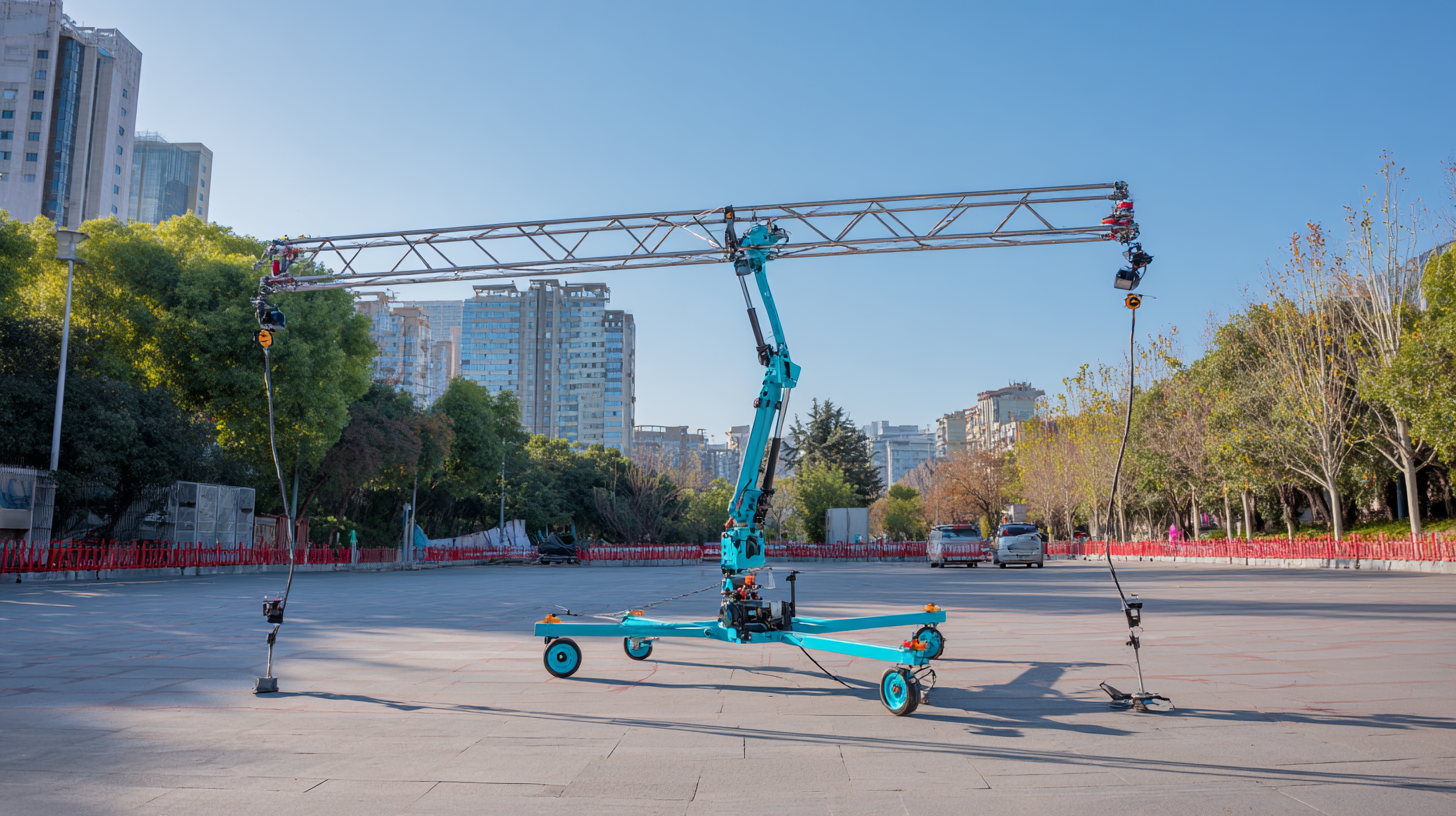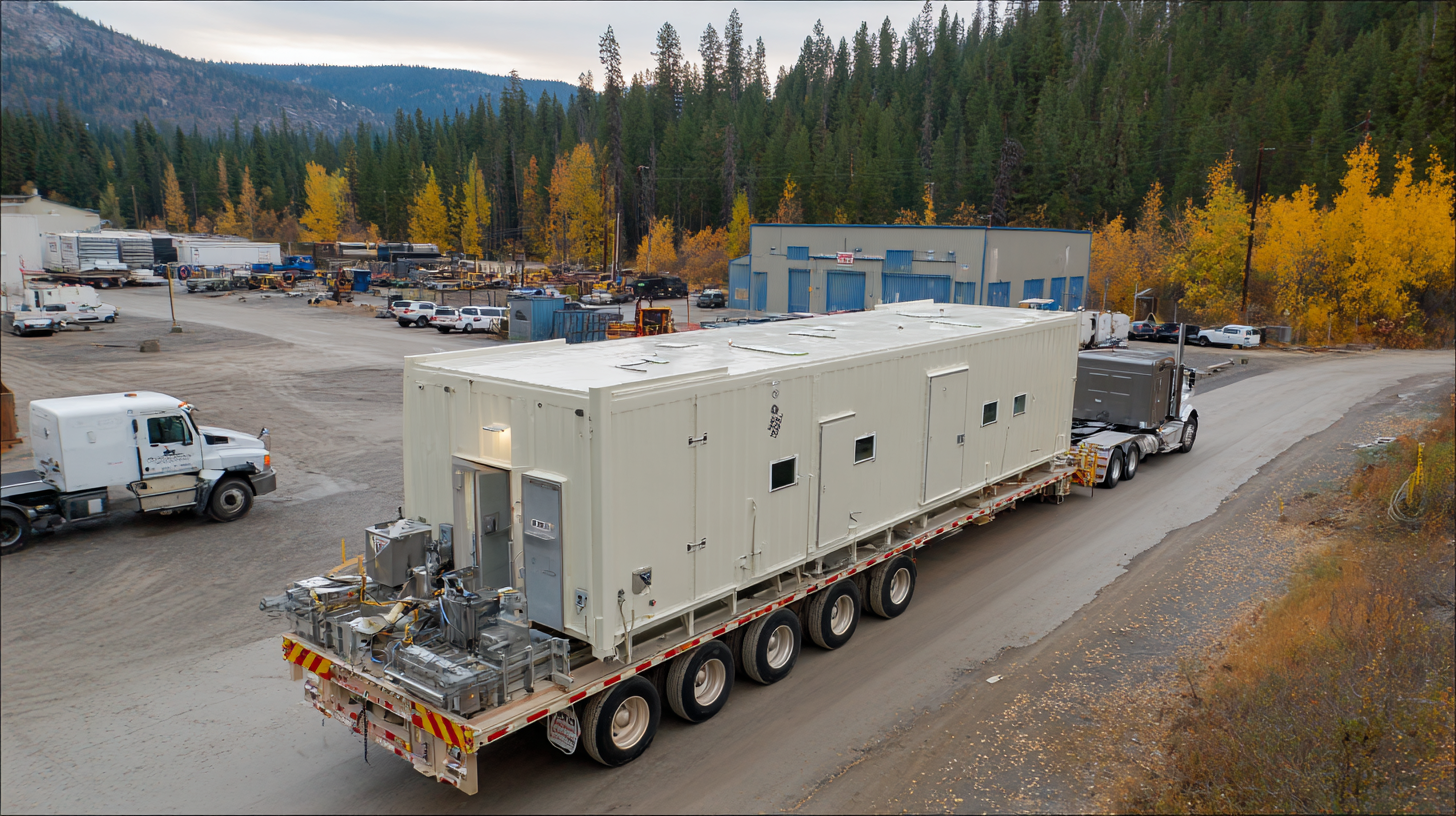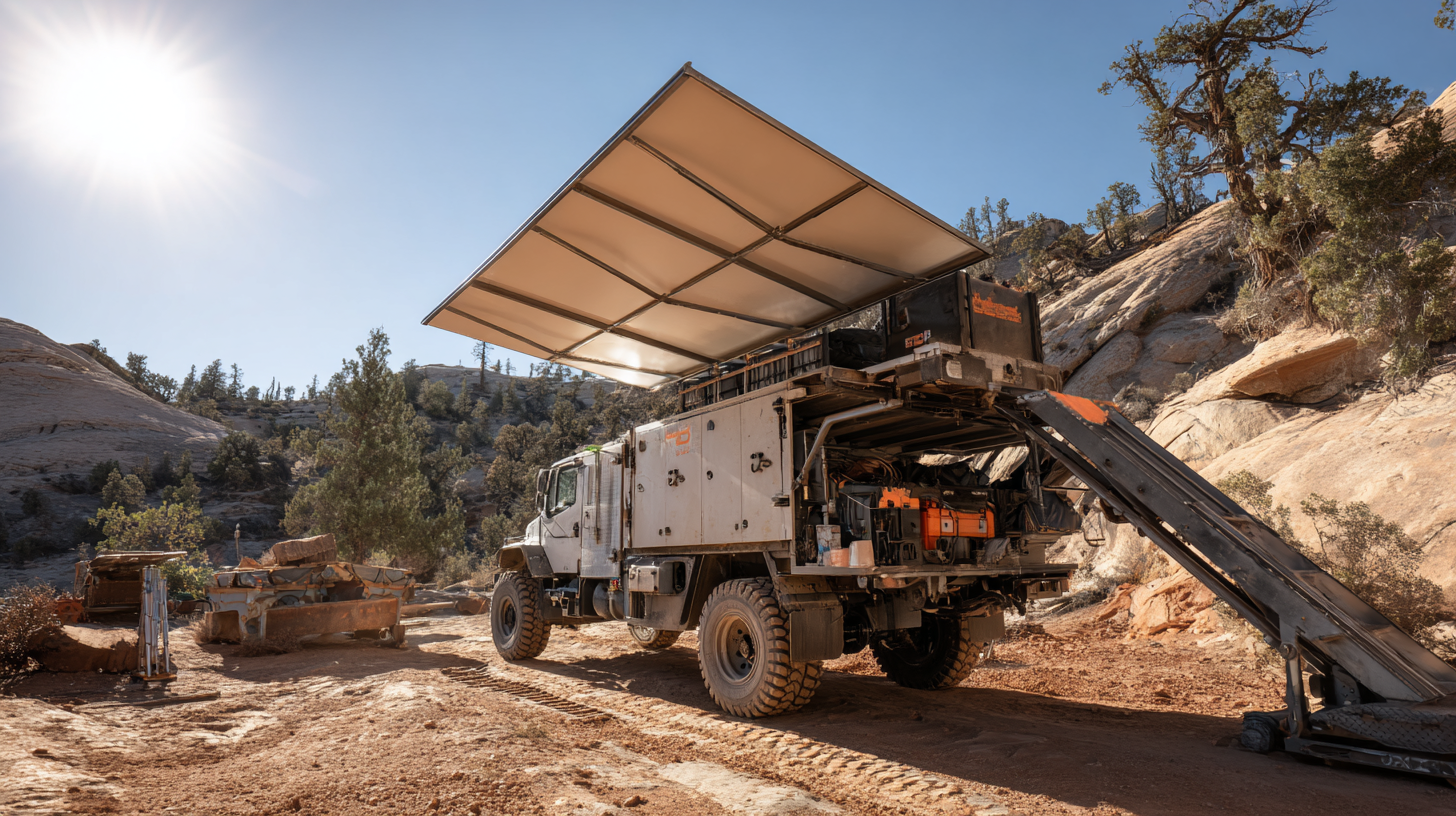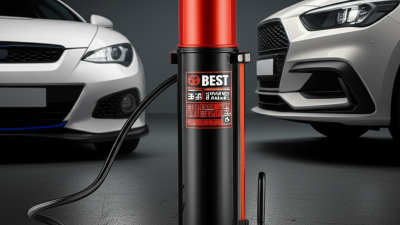Transforming Your Workflow in 2025 with the Best Mobile Lift Solutions for Global Buyers
Table of Contents
- Strategies for Selecting Mobile Lift Solutions Tailored to Your Workflow Needs
- The Impact of Mobile Lifts on Operational Efficiency in Various Industries
- Key Technological Innovations Enhancing Mobile Lift Performance in 2025
- Understanding Safety Standards and Regulations for Mobile Lift Usage Globally
- Analyzing Cost-Effectiveness of Mobile Lift Solutions for Global Buyers
- Case Studies: Successful Transformations Using Mobile Lift Technology in 2025
- FAQS
- Related Posts
As we get closer to 2025, it’s clear that the world of mobile lifting solutions is about to see some pretty big changes. These shifts are really in response to what global buyers are now looking for. I recently read a report by MarketsandMarkets, and it predicts that the worldwide mobile lift market will grow at around 6.2% annually from 2020 to 2025. That’s mainly because industries like construction, warehousing, and logistics are craving better efficiency and safety. Yantai Tonghe Precision Industry Co., Ltd. is right at the cutting edge of this movement. They focus on designing, developing, and selling hydraulic control systems and mobile lifts. Their dedication to innovation and precision isn’t just for show — it’s all about helping their customers work smarter, faster, and safer. As more companies want dependable and effective mobile lifts, our latest tech offers a pretty great alternative to the old-school methods. It’s built to keep operators safe and sure in all kinds of environments, no matter what.

Strategies for Selecting Mobile Lift Solutions Tailored to Your Workflow Needs
When you're trying to pick the right mobile lift for your workspace, it’s super important to think about what your day-to-day tasks really require. Take a moment to figure out what kinds of jobs you’re doing regularly and consider how a mobile lift might help you get things done quicker and more smoothly. For example, if you’re often lifting heavy loads or handling materials, you'll want a model that can handle those weights safely and stays stable—you know, to keep everything safe and reliable.
Quick tip: Don’t forget to give some thought to ergonomics. Picking a lift that’s comfy to use can really cut down on workplace injuries and make your day a lot more pleasant. Look for features like adjustable heights, easy-to-maneuver controls, and simple, intuitive operation—that stuff can really make your life easier.
Also, it’s worth considering how versatile the lift is. A model that can adapt to different settings—whether it’s in manufacturing, storage, or construction—can save you a headache down the line. Check out lifts with swappable attachments or multifunctional capabilities; they can handle a variety of tasks without you needing multiple machines.
And don’t forget: do a bit of homework by reading user reviews or case studies to see how well certain models perform in situations similar to yours. That kind of info can really help you make an informed choice, so you end up with a lift that truly supports your workflow and keeps things running smoothly.
Transforming Your Workflow in 2025 with the Best Mobile Lift Solutions for Global Buyers
| Dimension | Mobile Lift Type | Load Capacity (kg) | Max Lift Height (m) | Battery Life (hours) | Safety Features |
|---|---|---|---|---|---|
| Industrial Use | Scissor Lift | 3000 | 3.0 | 8 | Safety Bars, Emergency Stop |
| Warehouse | Mast Lift | 2000 | 4.5 | 6 | Tilt Protection, Safety Harness |
| Construction | Boom Lift | 1500 | 15.0 | 5 | Lock Brakes, Stabilizers |
| Retail | Personnel Lift | 250 | 2.5 | 10 | Emergency Descent, Platform Guardrails |
| Maintenance | Utility Lift | 1000 | 3.0 | 7 | Overload Protection, Alarm System |
The Impact of Mobile Lifts on Operational Efficiency in Various Industries
Mobile lift solutions have really become a game-changer when it comes to boosting efficiency across a bunch of different industries. I came across a recent report from Research and Markets, and it says the global mobile lift market is projected to grow at around 5.2% CAGR from 2023 through 2030. That just goes to show how much companies are craving better, more efficient ways to handle materials. And honestly, mobile lifts don’t just speed things up—they also make workplaces safer by letting workers reach those higher spots with less strain and less risk of accidents.
At Yantai Tonghe Precision Industry Co., Ltd., we totally get how important hydraulic control systems and lifts are for various industries. From our experience, companies that have invested in mobile lift systems have actually seen their productivity jump by about 30%. That’s no small feat — it’s directly linked to less downtime and better safety measures. As we keep working on improving our hydraulic cylinders and car lifts, we make sure our new products are in tune with these trends. Our goal? To help customers around the world meet their needs for efficiency and safety, without missing a beat.

Key Technological Innovations Enhancing Mobile Lift Performance in 2025
By 2025, mobile lift solutions are really about to shake things up across different industries. Thanks to some pretty cool tech, these lifts are becoming way more efficient and versatile. If you look at the stats from the Global Mobile Lifting Equipment Market, they’re expecting a solid growth of around 6.2% each year — which shows just how much people want smarter, adaptable lifting gear that can handle all sorts of work environments. Things like IoT and AI automation are leading the charge, giving companies real-time data, predictive maintenance, and all that jazz, which cuts down on downtime and keeps things safer.
Plus, new battery tech is making a big difference — batteries last longer and perform better than ever before. A study from the International Association of Lifting Equipment Engineers (IALEE) points out that switching over to lithium-ion batteries has bumped up energy efficiency by about 30%. On top of that, smart design tweaks — lighter materials and ergonomic shapes — are making these lifts easier to maneuver and more comfortable for users. That’s super important in fast-paced work sites. As all these innovations keep evolving, businesses around the world will be better equipped to meet their lifting needs while still keeping safety and efficiency front and center.
Understanding Safety Standards and Regulations for Mobile Lift Usage Globally
In today's super busy world, having reliable mobile lift solutions is pretty much a must across different industries, especially in healthcare and logistics. With many companies around the globe looking to switch things up in 2025, it’s really important to get a good handle on the safety rules and regulations that come with these lifts. Not only do these standards make sure the equipment works properly, but they also help keep people safe from potential accidents. Every country has its own set of regulations that manufacturers need to follow, and there are organizations that set and verify these standards to make sure everything’s legit and compliant.
Take the Patient Lifting Equipment market, for example. It’s set to grow a lot soon, mainly because there’s a bigger demand for devices that help folks with mobility issues. As this market expands, the importance of strict safety standards just keeps getting more obvious. Buyers really need to familiarize themselves with both local and international rules that apply to mobile lifts—these standards are what guarantee the quality and dependability of the equipment. Basically, the more you stick to safety regulations, the better your operations will run, plus you’re making sure everyone—users and staff alike—is protected and cared for.
Analyzing Cost-Effectiveness of Mobile Lift Solutions for Global Buyers
By 2025, global buyers are really feeling the heat when it comes to finding
mobile lift solutions that are both efficient and reliable—anything
that can help make their workflows smoother. One thing that pops up quite a bit is how important cost-effectiveness is when choosing the right lift.
It's not just about the upfront price; you’ve gotta think about the long run too—things like maintenance costs, energy bills,
and the headaches that come with downtime. Taking all those factors into account helps buyers make
smarter decisions and ensures they get the best bang for their buck.
On top of that, how versatile and adaptable a mobile lift is really matters.
Companies that need to move stuff around a lot or switch things up often lean towards lifts that are sturdy but also super easy to handle.
Modern features—like foldable parts or lightweight materials—can actually
save a lot on transportation and setup, giving a nice boost to overall productivity. If buyers keep these things in mind, they’re more
likely to find solutions that not only fit their current needs but also support their growth and keep things running smoothly down the line.
Case Studies: Successful Transformations Using Mobile Lift Technology in 2025
By 2025, mobile lift tech has really changed the game when it comes to efficiency across a bunch of different industries. It’s made workflows smoother and made managing tasks a whole lot easier. Yantai Tonghe Precision Industry Co., Ltd. has been right there in the thick of it, leading the charge with innovative hydraulic control systems and car lifts that have boosted productivity for customers all over the world. We've put a lot of effort into R&D, which helps us create solutions tailored to different operational needs — showing just how adaptable and effective mobile lift technology really is.
If you look at some real-world examples, the benefits become pretty clear. Take an automotive giant that used our car lifts on their assembly line — they saw some pretty impressive efficiency improvements. The whole lifting process became easier, cutting down on manual labor and reducing downtime, so they could produce faster. And it’s not just cars — a logistics company also shared that they saw fewer operational delays thanks to our hydraulic systems in their warehouses. All of this shows how mobile lifts can completely transform workflows, cut costs, and support growth—especially in today’s fast-moving market.

FAQS
: Safety standards for mobile lifts vary by country, with regulations set by designated organizations to ensure compliance and user safety.
Understanding safety standards is crucial as they ensure the proper functioning of equipment and protect users from potential hazards.
The Patient Lifting Equipment market is expected to grow significantly due to the increasing demand for devices that assist individuals with limited mobility.
Buyers should consider initial purchase price, long-term operational costs, maintenance, energy consumption, and potential downtime.
Design features like foldable structures and lightweight materials enhance maneuverability and reduce transportation costs, increasing overall productivity.
Yes, case studies show that automotive manufacturers and logistics companies have improved efficiency and reduced operational delays by integrating mobile lift technology.
Innovation in hydraulic control systems and designs can significantly enhance the versatility and performance of mobile lift solutions across industries.
Organizations should be well-informed about local and international compliance frameworks to prioritize adherence to safety standards.
Integrating mobile lifts can reduce manual labor, minimize downtime, enhance productivity, and support cost savings in various industries.
Related Posts
-

Innovative Solutions for Maximizing Efficiency with the Best 6000 Lb Car Lift
-

Essential Checklist for Selecting the Best 3500kg Quick Lift Car Lift for Vehicle Maintenance
-

Maximize Your Investment with 5 Essential Tips for Affordable Repair and After Sales Support on Best Portable Truck Jack
-

Experience Excellence in Manufacturing with the Best Mobile Forklift from a World Class Chinese Factory
-

How to Choose the Best Portable Hydraulic Jacks for Electric Cars by 2025 Industry Trends
-

The Future of Efficient Lifting with Best Bottle Jack Quick Pump
Blog Tags:

